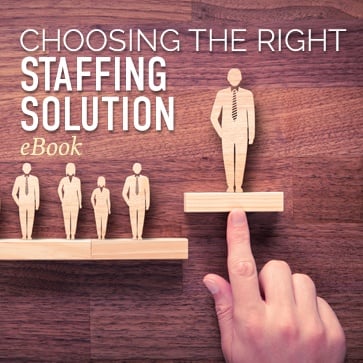STATEMENT OF WORK MANAGEMENT SERVICES
You’ve got a lot on your plate. Who has time to look through all of those contracts and make sure everything’s on the up and up?
We do. For you.
Statement of Work (SOW) management services can help you develop a process and criteria for ensuring that statement of work contracts are properly created, vendors are properly engaged and work is delivered. Believe us, it’s not that easy and when you get down into the details. From vague contracts to unaccounted for headcount, we’ll help you find it, manage it and control it. We also have the sourcing and contracting expertise to help you with services procurement activities whether it is supporting your existing team with competitive sourcing or full category management, we have a dedicated services procurement Center of Excellence (CoE) to support you.
Efficient and Cost-effective
We help create a program to give you visibility and consistency with your SOW engagements. Need to know how much you are spending? Need help with SOW misclassification that should be temp staff to capture cost savings? We’ve got that. Need supplier recommendations for competitive sourcing? Need to make sure things are actually getting done? We’ve got you covered there too. It’s part of our services procurement CoE within our managed services that were developed to help you keep everything on track. Contact us today and find out what personal service is really like.
SOW MANAGEMENT SERVICES
Statements of work, especially those related to talent coming into your organization, mean risk when it comes to what they are doing, how they are paid and what you are receiving. It’s a mystery to most HR managers and a headache for procurement. Let us help take the mystery out of it for you, and take away the headache. We can develop and manage a process to give you peace of mind and ensure that full SOW lifecycle engagements are efficiently and cost-effectively flowing through your organization. You’ll get the services and workers you need and the information and analytics to help manage your risk and your costs.
WHY AN SOW MANAGEMENT PROGRAM?
- Visibility: See where all of your SOW spend is quickly and easily.
- Consistency and Compliance: If there’s a way around it, managers will find it. We help make sure the process is consistent and compliant with how you want to use SOWs in your business.
- Change Management Developing a process for determining SOW use, enforcing procurement/business rules of engagement and tracking can be complicated. We’re the calming force that gets people bought in and helps you get things done.
- Tracking and Cost Management – Do you know how much you are paying in SOW engagements and where? Are you competitively sourcing engagements for the best value? Are you ensuring that the SOW scope, deliverables and terms match the service and bill you are receiving? We don’t know either… yet. But we can help you find out and more.
- Reduce Risk – That’s why we’re here right? When’s the last time your CEO commended you for reducing risk and saving money? We’d like to make that happen more often.
- Reporting & Analytics – Determine performance of SOW services and engagements and understand how to make better strategic decisions as it relates to SOW usage in your business. We will also help you uncover savings opportunities and category management optimization.
INTEGRATED WORKFORCE SOLUTIONS
Putting together a holistic program to help manage all of your external workforce engagements takes experience and coordination. Let us create a program just for you that covers contingent workers, independent contractors, staffing suppliers, SOW engagements and pre-identified or payrolled workers. Trust us, it’s a lot easier if you have one process or many processes coming through one managed services provider. And a lot easier than doing it yourself. Contact us about how a managed services program can help you get your arms around your entire workforce.



